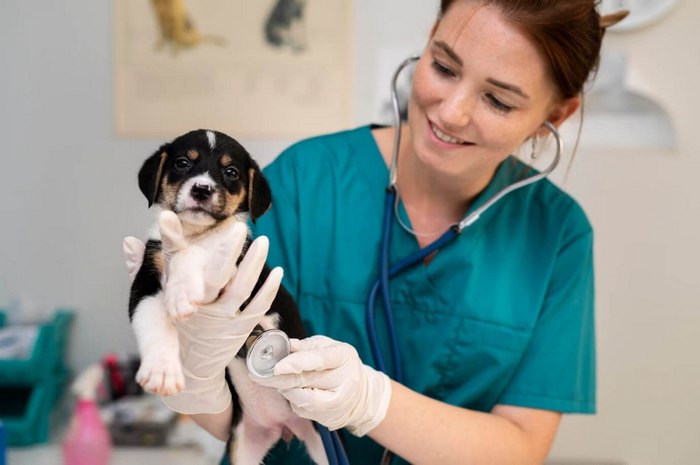
Emergency Vet Loans: Your Gateway to Timely and Affordable Pet Care
In the life of every pet owner, there comes a time when the unexpected happens. Whether it’s a sudden illness or a tragic accident, emergency vet visits are a reality that we must prepare for. Unfortunately, the expenses associated with veterinary care can quickly escalate, leaving many pet owners grappling with financial strain on top of emotional distress. However, securing a vet loan can alleviate this burden, allowing you to concentrate fully on your pet’s recovery. In this article, we delve into the world of loans for vet bills, a resource that could potentially be a lifeline in a time of crisis. We will explore various options available to pet owners, shedding light on how to navigate this financial safety net, and ensure your furry friend receives the care they so rightly deserve.
Personal Loans for Vet Bills
In the face of a pet emergency, time is often of the essence. Loans for vet bills provide a financial buffer, enabling you to act promptly without the worry of sky-high costs. Typically, these loans come in different forms – personal loans, pet insurance, or credit lines designated for pet care. Understanding the nuances of each option can help you make an informed decision based on your financial situation and your pet’s needs. Moreover, it’s crucial to familiarize yourself with the interest rates, repayment terms, and potential hidden fees associated with these loans. Doing so can prevent any unpleasant surprises down the line, ensuring a smooth process in getting your pet back to good health.
The Steps to Securing a Vet Loan
Embarking on the journey to secure a vet loan might seem daunting at first. However, with a step-by-step guide at your disposal, it becomes a much more manageable task. Initially, you would need to assess the extent of the financial assistance required, followed by a thorough research on potential lenders. Subsequently, gathering necessary documentation and meeting eligibility criteria are vital phases in this process. Moreover, it’s advisable to have a repayment strategy in place to avoid falling into a debt trap. In this section, we’ll walk you through each phase meticulously, helping you navigate the road to obtaining a vet loan with ease and confidence.
Tips for Negotiating with Your Vet for Payment Flexibility
- Research Ahead: Before the negotiation, make sure to research common prices for the procedure or treatment your pet needs. It will help you have a realistic expectation during the negotiation.
- Open Communication: Approach your vet with a clear but respectful communication about your current financial situation, emphasizing your willingness to find a middle ground.
Deciphering the Terms: Interest Rates, Fees, and Repayment Plans
- Interest Rates:
- Fixed Interest Rate: Understand if the loan offers a fixed interest rate, where the interest remains constant throughout the loan term.
- Variable Interest Rate: Learn about the implications of a variable interest rate, which can fluctuate over the loan term.
- Fees:
- Origination Fee: This fee might be charged to cover the cost of processing the loan.
- Late Payment Fee: Understand the repercussions of late payments, including additional fees.
- Prepayment Fee: Learn if there are any penalties for paying off the loan earlier than the agreed term.
- Repayment Plans:
- Monthly Installments: Know the amount to be paid monthly and the flexibility it offers.
- Loan Term: Understand the duration of the loan term and how it impacts the total interest paid.
- Grace Period: Inquire if there is a grace period that allows a buffer time before the first payment is due.
- Loan Agreements:
- Reading the Fine Print: Make sure to carefully read and understand all terms and conditions outlined in the loan agreement.
- Seeking Expert Advice: If necessary, consult with a financial advisor to understand the nuances of the loan terms better.
- Comparison Shopping:
- Comparing Different Lenders: Before settling on a loan, compare the terms offered by different lenders to find the best match for your financial situation.
- Online Calculators: Utilize online calculators to estimate potential monthly payments and total interest over the loan term.
Pet Insurance: A Preventative Measure
Sometimes, the best defense is a good offense. In this section, we will explore the realm of pet insurance as a viable preventative measure to buffer against hefty vet bills. Understand the various plans available, what they cover, and how they can potentially save you from seeking emergency loans in the future. We will guide you through selecting the best insurance policy that suits both your pet’s medical needs and your budget, offering peace of mind and financial security in times of unforeseen veterinary emergencies.
Final Thoughts
In the unpredictable journey of pet ownership, being equipped with knowledge and resources is vital. From understanding the intricate details of vet loans to skillfully negotiating flexible payment plans with your veterinarian, you are now empowered to make decisions that are both financially sound and in the best interest of your pet’s health. Remember, the goal is to ensure that your beloved pet receives the necessary medical attention without causing you financial strain.
Moreover, it’s worth considering establishing a robust financial safety net for your pet’s future. Engaging in preventive measures like getting pet insurance or starting an emergency fund can act as a buffer, shielding you from the financial shock that often accompanies veterinary emergencies. As we navigate these financial waters, it’s comforting to know that there are viable options available to help us during challenging times. By utilizing these resources wisely, we can provide our furry family members with the love, care, and medical attention they deserve, without compromising our financial stability.



